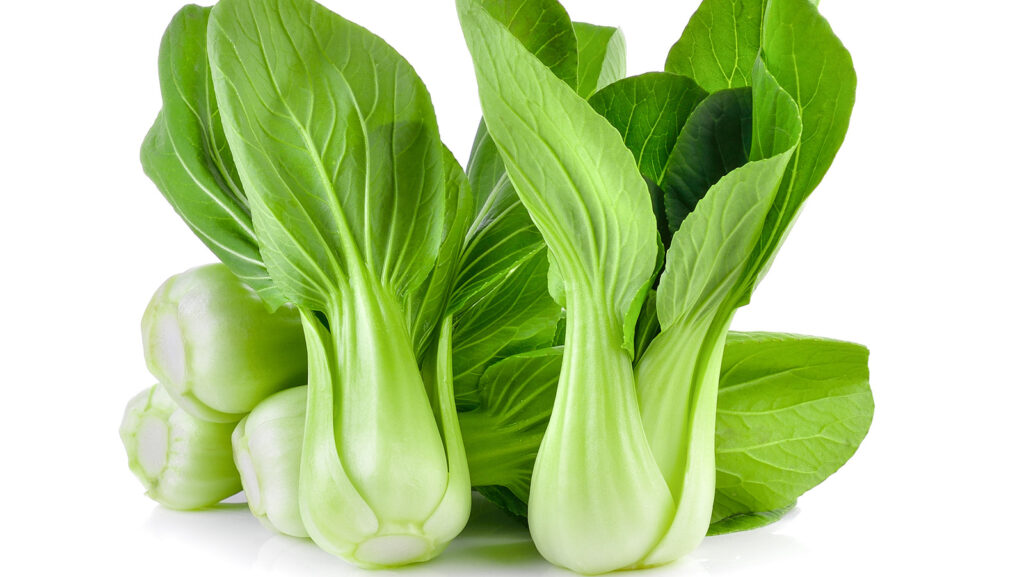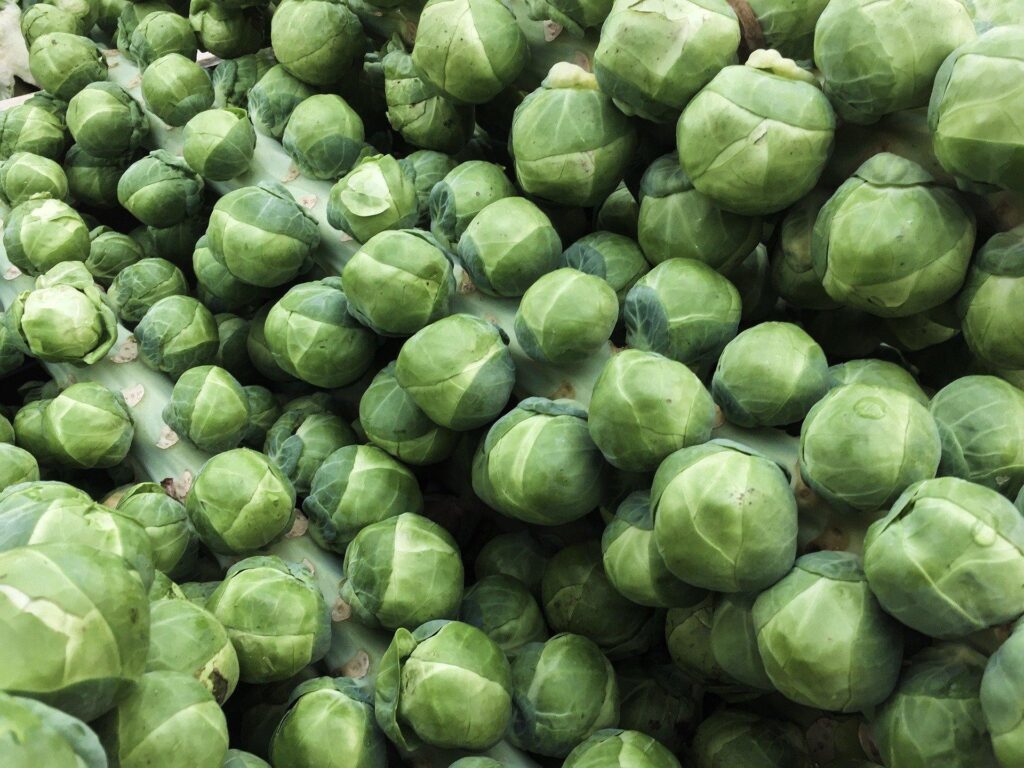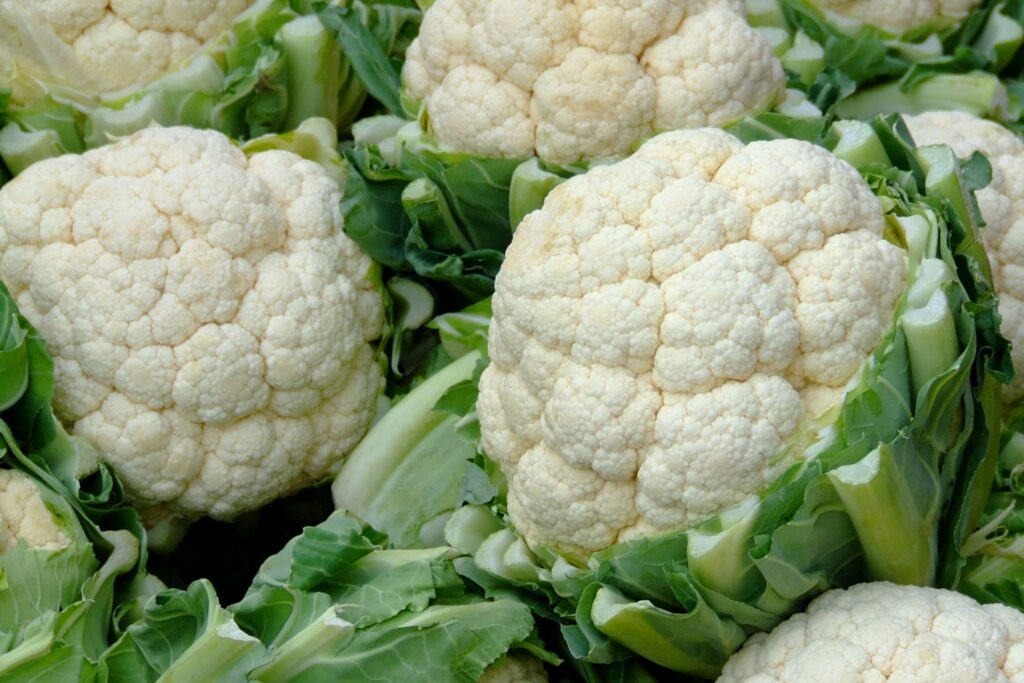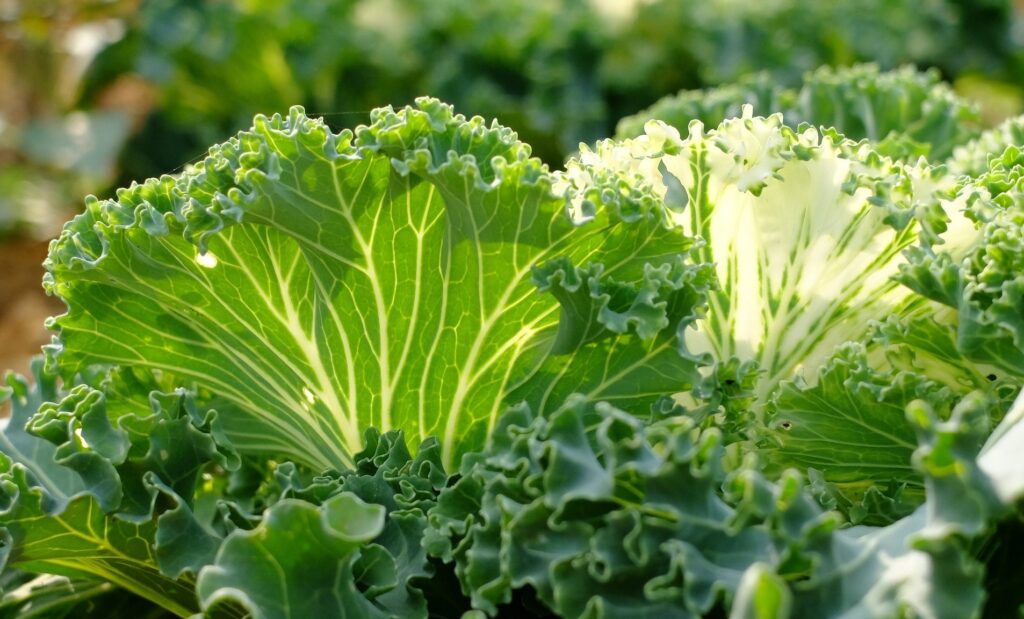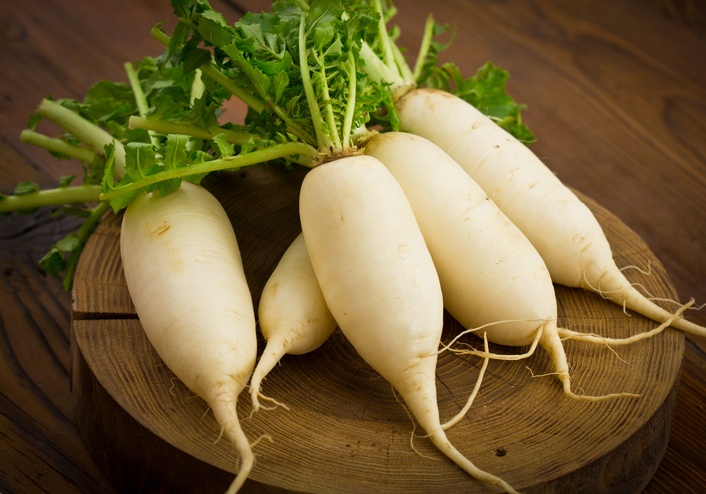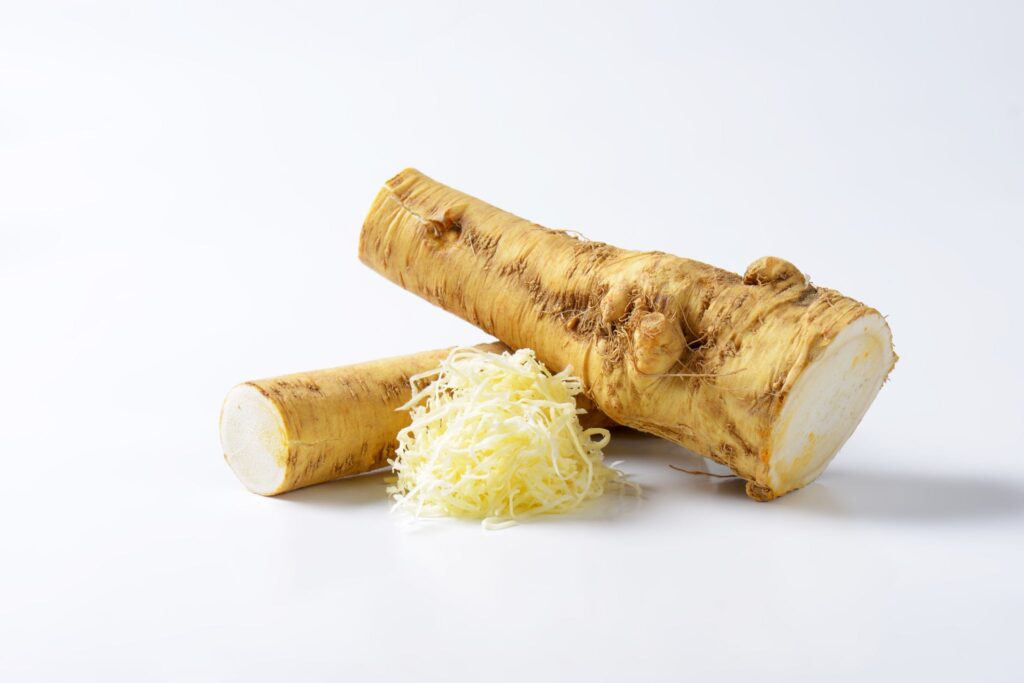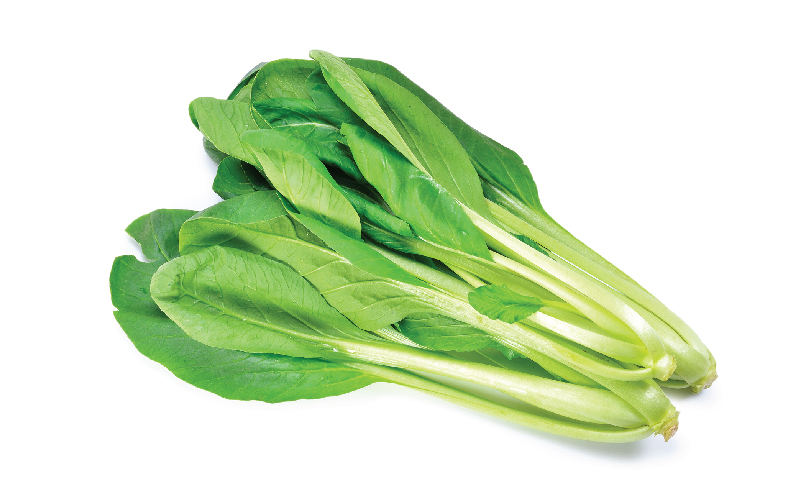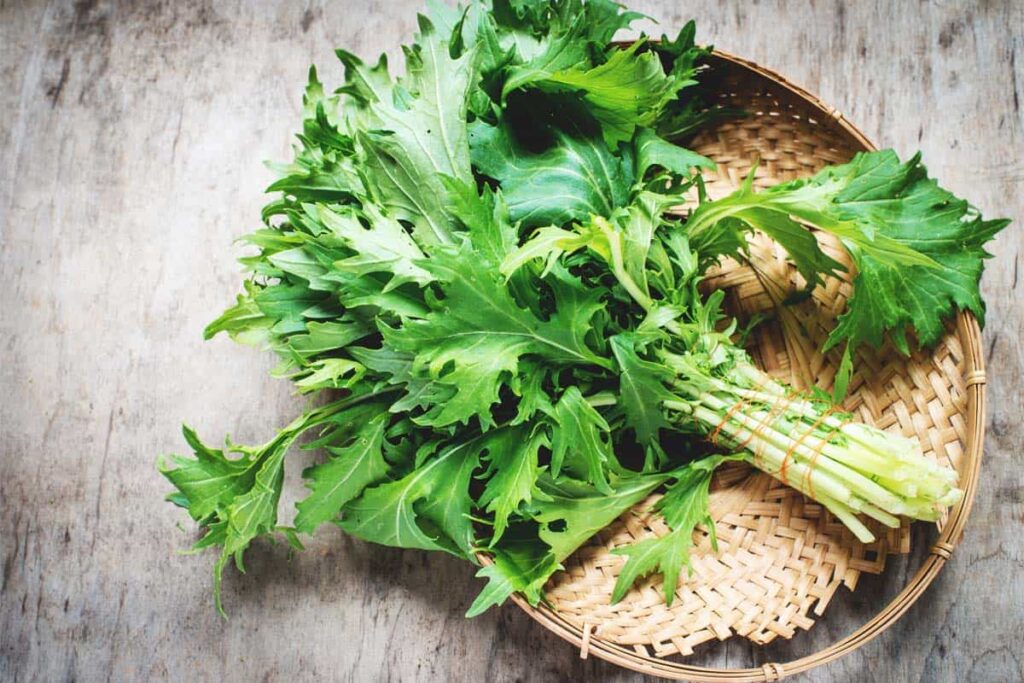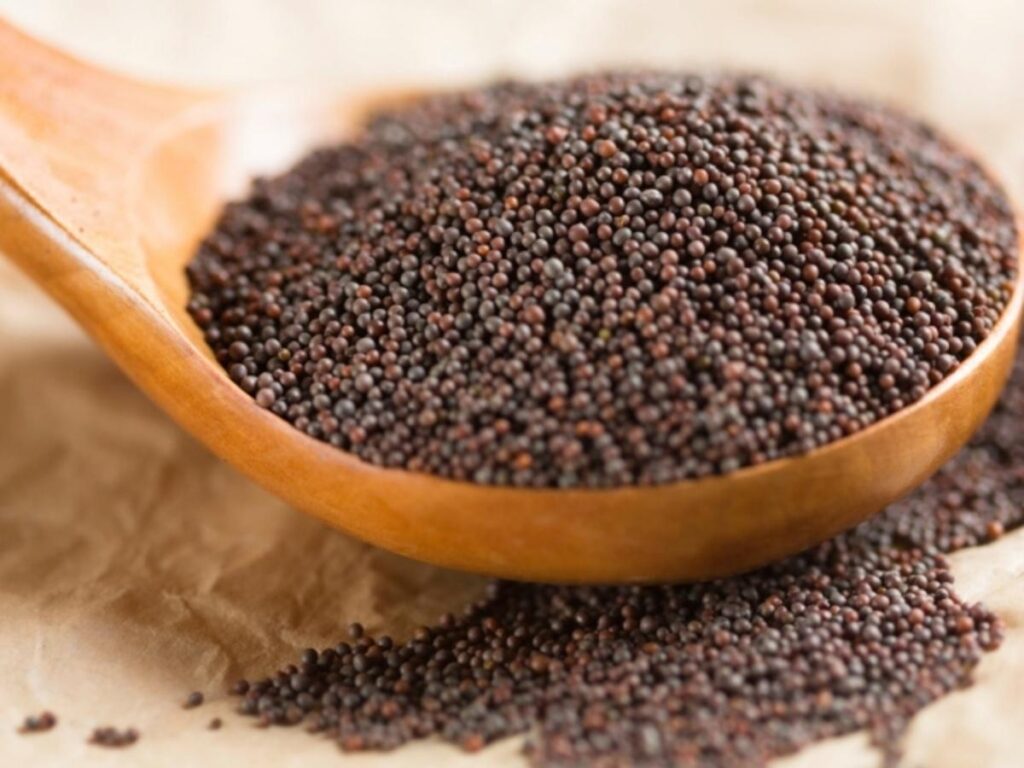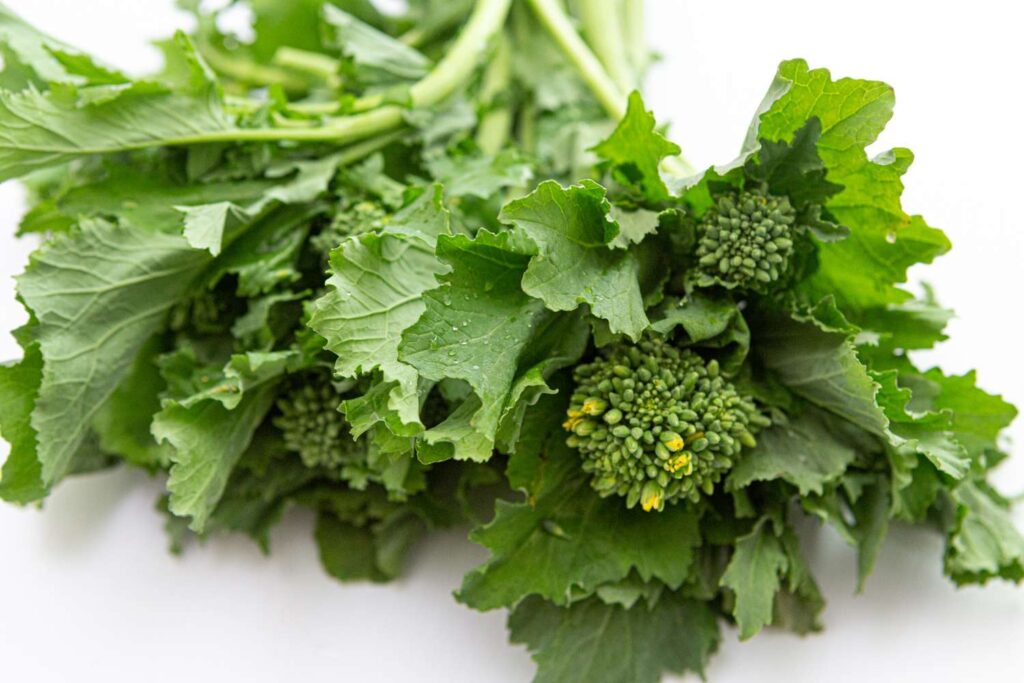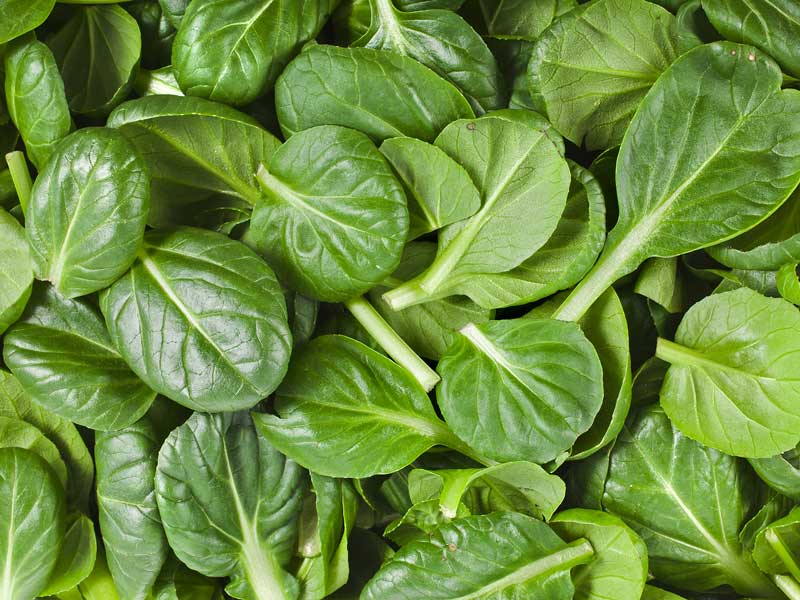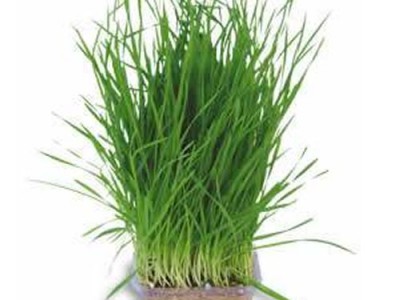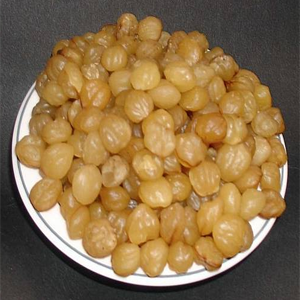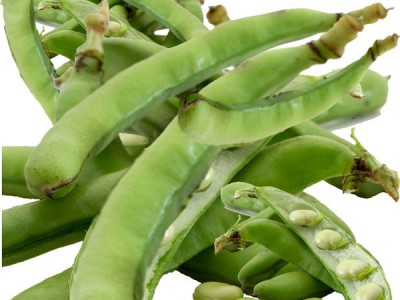
Cruciferous Vegetables
CRUCIFEROUS VEGETABLES
Cruciferous vegetables, also known as Brassica vegetables, are a type of nutritious plant food that come from the mustard family and are packed with essential vitamins, minerals, and fiber. Cruciferous vegetables are known for their distinctive and pungent flavor that can add a range of unique flavor characteristics to meals.
It is for this reason that these vegetables are slowly becoming staples in the diets of many health-conscious individuals. Not only do they offer a variety of beneficial nutrients, but cruciferous vegetables have also been shown to have a number of potential health benefits, including reducing cancer risk, aiding digestion, and reducing inflammation.
LIST OF CRUCIFEROUS VEGETABLES
- Arugula
- Bok Choy
- Broccoli
- Brussels sprouts
- Cabbage
- Cauliflower
- Chinese cabbage
- Collard greens
- Daikon
- Garden cress
- Horseradish
- Kale
- Kohlrabi
- Komatsuna
- Mizuna
- Mustard
- Rapini
- Rutabaga
- Tatsoi
- Wasabi
ARGULA
Arugula, also known as Rocket or Roquette, is a leafy green vegetable with a nutty flavor and a peppery bite. It is a member of the cruciferous family, which includes broccoli, kale, and cabbage. Arugula is a powerhouse of nutrients and is an excellent source of vitamins A, C, and K, folate, manganese, calcium, and potassium. It is also high in fiber and has a low glycemic index.
Culinary Uses:
Because of its strong flavor and some potential health benefits, Argula is gaining in popularity as a food item. It is often mixed with milder ingredients such as lettuce and cucumbers to make salads more interesting. Some have added Argula to sandwiches and wraps, or have pureed it to make soups and sauces.
Nutritional Values:
For its nutritional value, arugula is an excellent source of nutrients. It is a good source of dietary fiber, vitamins A, C, and K, and folate . It also contains calcium, manganese, magnesium, phosphorus, zinc, copper, omega-3 fatty acids, and iron. A one-cup serving of raw arugula contains only five calories.
Health Benefits:
Arugula also provides several health benefits:
- Arugula is rich in Vitamin A and C, which support immune and eye health, as well as promoting healthy skin.
- It also contains antioxidants, which can help fight against inflammation, free radicals, and chronic diseases.
- Additionally, arugula is thought to help promote bone health, reduce cholesterol levels, and promote healthy digestion.
- Finally, arugula is a great source of folate, which is important for pregnant women, as it helps to protect the unborn child from certain birth defects.
BOK CHOY
Bok Choy (Brassica Rapa var. chinensis) is a type of cabbage commonly consumed throughout Asia. It is a cruciferous vegetable, like broccoli, cabbage, and Brussels sprouts, and is often referred to as a Chinese cabbage.
One of bok choy’s greatest assets is its versatility. Its green tops and white stalks can be eaten raw or cooked in a variety of ways. In salads and other dishes, the firm white stalks are usually diced or thinly sliced, while the softer, leafy tops can be left whole or chopped into bite-sized pieces. The leaves and stalks can also be boiled, steamed, stir-fried, braised, or blanched. Many cooks prefer to mix bok choy with hearty vegetables such as carrots, onions, and root vegetables to create a filling vegetable medley. Bok choy has become a standard ingredient in Asian-inspired dishes, but its flavor and crunchy texture make it a great addition to any home-cooked meal. As with other types of cabbage, bok choy is best enjoyed as fresh as possible, as prolonged storage can cause it to become limp and lackluster.
Nutritional Value:
Bok Choy is low in calories but contains important vitamins and minerals. It is an excellent source of vitamins A, C, and K. Additionally, Bok choy is a good source of dietary fiber, calcium, iron, folate, magnesium, potassium, and phosphorous.
Health Benefits:
Bok Choy is rich in antioxidants which can help to protect cells from damage. Additionally, its vitamin K content helps to support bone health. It’s also been linked to reduced inflammation, healthy vision, and improved digestion. Bok choy can also help to reduce the risk of certain cancers, including prostate and colorectal cancer. Furthermore, bok Choy is low in calories and can help to support weight loss efforts and lower the risk of obesity and type-2 diabetes.
BROCCOLI
Broccoli is a green cruciferous vegetable from the Brassica family, which is closely related to cauliflower and cabbage. It is an excellent source of vitamins, minerals, dietary fiber, and a number of antioxidants.
Nutritional Values:
Broccoli is a highly nutritious vegetable, with a 100 gram serving providing:
• Calories: 34
• Protein: 2.6 grams
• Fiber: 2.6 grams
• Carbohydrates: 6.6 grams
• Vitamin C: 89.2 milligrams
• Vitamin K: 69.7 micrograms
• Folate: 20.7 micrograms
• Potassium: 316 milligrams Health Benefits: Broccoli is a great source of essential vitamins and minerals and is known for its numerous health benefits.
• Anti-inflammatory properties: Broccoli contains a number of compounds that have anti-inflammatory properties, such as sulforaphane.
• Improved digestion: Broccoli is high in fiber, which helps promote the growth of beneficial bacteria in the gut and improves overall digestive health.
• Improved heart health: The phytochemicals in broccoli may help reduce the risk of heart disease by lowering cholesterol levels and improving blood pressure.
• Protection from cancer: Studies suggest that compounds in broccoli may help protect against certain types of cancer, such as breast and colorectal cancer.
BRUSSELS SPROUTS
Brussels Romanesco is a green vegetable related to the cabbage family. It has a unique appearance and texture with curd-like buds arranged in spirals. It has a subtle sweet-mustardy flavor and crunchy texture. It is high in vitamins A, C, K and B, and minerals such as calcium, potassium, iron, copper, phosphorus, and zinc.
Nutritional Value:
Brussels Romanesco is a nutrient-dense vegetable, with a high level of fiber, antioxidants, vitamins, minerals, and enzymes. It is high in Vitamin A, providing 15% of your daily requirement in just one cup. It is also high in Vitamin C (providing 25% of your daily requirement), Vitamin K (25%), folate (18%), and Colibacillus (12%).
Health Benefits:
Brussels Romanesco provides a host of health benefits, including promoting digestive health, improving skin health, and fighting inflammation. The abundance of vitamins, minerals, and fiber make it beneficial for the health of the digestive tract. It is an excellent source of prebiotic fiber, which is beneficial for boosting healthy bacteria in the gut. Additionally, Brussels Romanesco has anti-inflammatory properties and can be beneficial for individuals with arthritis or other inflammatory conditions
CABBAGE
Cabbage is a healthy and nutritious vegetable that belongs to the cruciferous family of plants. It is a leafy green vegetable that is high in vitamins, minerals, antioxidants, and fiber. It is also low in fat and calories.
Nutritional Values:
| Energy | 103 kJ (25 kcal) |
| Carbohydrates | 5.8 g |
| Sugar | 3.2 g |
| Dietary Fiber | 2.5 g |
| Fat | 0.1 g |
| Protein | 1.28 g |
| Vitamins | Quantity | %DV† |
| Thiamine (B1) | 0.061 mg | 5% |
| Riboflavin (B2) | 0.040 mg | 3% |
| Niacin (B3) | 0.234 mg | 2% |
| Pantothenic acid (B5) | 0.212 mg | 4% |
| Vitamin B6 | 0.124 mg | 10% |
| Folate (B9) | 43 μg | 11% |
| Vitamin C | 36.6 mg | 44% |
| Vitamin K | 76 μg | 72% |
| Minerals | Quantity † | %DV |
| Calcium | 40 mg | 4% |
| Iron | 0.47 mg | 4% |
| Magnesium | 12 mg | 3% |
| Manganese | 0.16 mg | 8% |
| Phosphorous | 26 mg | 4% |
| Potassium | 170 mg | 4% |
| Sodium | 18 mg | 1% |
| Zinc | 0.18 mg | 2% |
Health benefits
1. High in Nutrients – Cabbage is an excellent source of vitamins C and K as well as dietary fiber. It is also high in folate and contains anti-cancer compounds.
2. May Decrease Inflammation – Cabbage is rich in anthocyanins and other polyphenols, which can help reduce inflammation in the body.
3. May Help Lower Blood Pressure – Due to its potassium content, cabbage can help reduce high blood pressure, which is a major risk factor for heart disease
. 4. May Improve Digestion – Cabbage is high in fiber, which is important for digestive health. Eating fiber-rich foods can help improve digestive function and reduce symptoms of constipation and diarrhea.
CAULIFLOWER
Cauliflower (Brassica oleracea var. botrytis) is a widely consumed cruciferous vegetable from the Brassica family. It has white, compact curd-like structure, which can be eaten cooked or raw. It is an excellent source of dietary fiber and a number of vitamins and minerals, including Vitamin C, Vitamin K, B Vitamins, and Potassium.
Nutritional Values:
Cauliflower is a good source of Vitamins, minerals, and dietary fiber.
• Vitamin C: 75% of the Daily Value (DV)
• Vitamin K: 20% of the DV
• B Vitamins: 14% of the DV
• Potassium: 9% of the DV
• Magnesium: 8% of the DV
• Manganese: 8% of the DV
Health Benefits
• Contains antioxidant compounds which help protect against certain cancers
• High in fiber which can help promote digestive health
• Contains sulforaphane which may have protective effects against certain types of cancer
• High in Vitamin C, which can help strengthen the immune system
• May help reduce the risk of type 2 diabetes, heart disease, and obesity.
Few Facts about Cabbage:
1. Cabbage is one of the oldest vegetables, having been cultivated for at least 4,000 years.
2. Cabbage is a member of the Brassica family, which includes kale, Brussels sprouts, broccoli and cauliflower.
3. The most common variety of cabbage is green, but it can also be red, purple, or white.
4. The word “cabbage” comes from the Latin word for “head,” as the leaves of a cabbage plant form a head-like shape.
CHINESE CABBAGE
Chinese cabbage, also known as Napa cabbage, is a leafy vegetable that originated in China and is widely used in dishes across Asia. It has a mild sweet flavor, a crunchy texture, and a light, almost peppery aftertaste. Chinese cabbage has a low calorie content, is high in fiber, and is rich in minerals and vitamins such as vitamin K, C, B-complex, and A .
Nutritional Values: Chinese cabbage is an excellent source of vitamins and minerals. In a 100 gram serving, it contains:
• Calcium – 24 mg
• Iron – 0.6 mg
• Magnesium- 15 mg
• Phosphorus- 34 mg
• Potassium- 159 mg
• Sodium – 1 mg
• Vitamin A – 605 IU (groups of carotenoids such as alpha-carotene, beta-carotene, and lutein)
• Vitamin C – 36.7 mg
• Vitamin K – 84 mcg
• Dietary Fiber – 2.7 g
Health Benefits:
1. Rich in Antioxidants: Chinese cabbage contains high levels of antioxidants, which can help protect against oxidative damage and reduce the risk of certain diseases.
2. Improves Digestive Health: Chinese cabbage is high in fiber, which can help improve digestive health and reduce the risk of constipation.
3. May Aid Weight Loss: Chinese cabbage is low in calories but high in fiber, both of which can aid in weight loss.
4. Reduces Risk of Cancer: The carotenoids found in Chinese cabbage have cancer-fighting properties and may help reduce the risk of certain cancers, such as colon and rectal cancer.
5. Improves Bone Health: Chinese cabbage is high in vitamin K, which is essential for bone health.
6. May Help Lower Blood Pressure: Chinese cabbage is high in potassium, which can help reduce high blood pressure.
7. Contains Anti-Inflammatory Compounds: Chinese cabbage contains anti-inflammatory compounds, which can reduce inflammation and improve overall health.
Few Facts about Chinese cabbage:
1. Chinese cabbage was introduced to Europe in the 16th century.
2. It is also known as celery cabbage and Wong bok.
3. The most common variety of Chinese cabbage is known as the Napa cabbage.
4. It is generally light green in color, but some varieties may be deep green or purple-tinged.
5. The leaves of the Chinese cabbage are usually broad and crinkly.
6. Chinese cabbage can be eaten raw or cooked.
7. It can be used to make salads, stir-fries, soups, and a variety of other dishes.
COLLARD GREENS
Collard greens is a leafy green vegetable of the species Brassica oleracea. It is part of the Acephala Group of the species, which includes kale and spring greens. Collard greens have a long history of cultivation, possibly predating Brussels sprouts, cabbage, and other veggies. They may have originated in the Mediterranean and can now be found around the world in various forms.
Collard greens can be eaten raw, boiled, steamed, or sautéed. They are popularly used in the southern United States in dishes like Southern-style cooked greens. Collard greens are known for being a popular component in soul food dishes.
Nutritional Value:
Raw collard greens are 90% water, 6% carbohydrates, 3% protein, and contain negligible fat (table). Like kale, collard greens contain substantial amounts of vitamin K (388% of the Daily Value, DV) in a 100-gram (3.5 oz) serving. Collard greens are rich sources (20% or more of DV) of vitamin A , vitamin C , and manganese, and moderate sources of calcium and vitamin B6. A 100-gram (3+1⁄2-ounce) reference serving of cooked collard greens provides 137 kilojoules (33 kilocalories) of food energy. Some collard cultivars may be abundant sources of aliphatic glucosinolates, such as glucoraphanin.
Health Benefits:
Collard greens contain powerful antioxidants that can protect the body from cell damage. They have also been shown to lower cholesterol levels, reduce risk of heart disease and stroke, and prevent certain types of cancer. Additionally, the high dietary fiber content may benefit digestive health, and the vitamin K content helps with bone health.
DAIKON
Daikon, sometimes referred to as Japanese radish, is a root vegetable with a mild flavor. It is known to have a distinctively sweet, yet peppery taste and a crunchy texture. The scientific name of daikon is Raphanus sativus var. longipinnatus. While daikon is native to the Asian subcontinent, most countries in Asia now cultivate it, and it is rapidly gaining favor in western countries as well.
Nutritional Values:
Daikon is an excellent source of fiber, vitamins, and minerals. It is a good source of Vitamin C and contains moderate amounts of minerals such as potassium, folate, calcium, magnesium, zinc, and iron. Daikon contains special compounds that have anti-inflammatory and antioxidant properties, which can help to reduce the risk of diseases.
Health Benefits:
Daikon is a great food for weight-loss and can help reduce the risk of chronic diseases. It is very low in calories and contains dietary fiber which helps to reduce overall calorie intake. An intake of dietary fiber has been linked with a reduction in the risk of obesity, diabetes, and heart disease. In addition, daikon helps to lower bad cholesterol and can also help to slow the absorption of sugar, resulting in blood sugar levels that are more stable. Daikon is also known for its cooling properties, which can be helpful for people suffering from indigestion. Daikon is believed to improve digestion, help relieve constipation, and prevent bloating. It has also been known to reduce excessive gas production, and can aid in detoxification when eaten in its raw form.
Culinary Uses:
Daikon can also be used in a variety of ways to add flavor and texture to meals. It can be grated and added to salads, soups, sauces, and stir-fries. It can also be pickled or fermented to maintain its crispiness and crunch. Raw daikon can also be juiced or blended with other vegetables to make delicious and nutritious smoothies.
Overall, daikon is an incredibly nutritious vegetable. It is packed with essential vitamins and minerals, and has anti-inflammatory and antioxidant properties which can be beneficial for your overall health. Not only is daikon a great source of dietary fiber, it can also help to reduce bad cholesterol levels, promote weight-loss, and improve digestion. Daikon is also incredibly versatile, and can be enjoyed in a variety of dishes.
GARDEN CRESS
Garden cress is genetically related to watercress and mustard, sharing their peppery, tangy flavor and aroma. In some regions, garden cress is known as mustard and cress, garden pepper cress, pepperwort, pepper grass, or poor man’s pepper.
This annual plant can reach a height of 60 cm (24 in), with many branches on the upper part. The white to pinkish flowers are only 2 mm (1⁄16 in) across, clustered in small branched racemes. When consumed raw, cress is a high-nutrient food containing substantial content of vitamins, C and K and several dietary minerals.
CULINARY USES:
Garden cress is added to soups, sandwiches and salads for its tangy flavor. It is also eaten as sprouts, and the fresh or dried seed pods can be used as a peppery seasoning (haloon). In the United Kingdom, cut cress shoots are commonly used in sandwiches with boiled eggs, mayonnaise and salt.
NUTRITION:
Raw cress is 89% water, 6% carbohydrates (including 1% dietary fiber), 3% proteins and less than 1%fat (table). In a 100-gram (3+1⁄2-ounce) reference quantity, raw cress supplies 134 kilojoules (32 kilocalories) of food energy and numerous nutrients in significant content, including vitamin K (516% of the Daily Value, DV), vitamin C (83% DV) and vitamin A (43% DV). Among dietary minerals, manganese levels are high (26% DV) while several others, including potassium and magnesium, are in moderate content (table).
HEALTH BENEFITS:
- Improves digestion: Garden cress is packed with fiber, which helps to stimulate the digestive system and keeps it running smoothly.
- Boosts immunity: Garden cress contains a powerful antioxidant called beta-carotene which is believed to protect cells from damage by free radicals, and is known to be beneficial for boosting the immune system
- Supports healthy skin: Garden cress contains vitamin C, which is essential for skin health and can help protect the skin from the harmful effects of free radicals.
- Supports healthy skin: Garden cress contains vitamin C, which is essential for skin health and can help protect the skin from the harmful effects of free radicals.
- Improves cardiovascular health: Regular consumption of garden cress has been associated with improved heart health, as it is rich in essential minerals like potassium and magnesium, which help to regulate blood pressure.
HORSERADISH
Horseradish (Armoracia rusticana, syn. Cochlearia armoracia) is a perennial plant of the family Brassicaceae . It is a root vegetable, cultivated and used worldwide as a spice and as a condiment. The species is probably native to southeastern Europe and western Asia.
Horseradish grows up to 1.5 meters (5 feet) tall, with hairless bright green unlobed leaves up to 1 m (3 Ft. 3 in) long that may be mistaken for docks (Rumex).It is cultivated primarily for its large, white, tapered root. The white four-petalled flowers are scented and are borne in dense panicles. Established plants may form extensive patches and may become invasive unless carefully managed.
CULINARY USES:
Horseradish is widely used in European cuisine as a condiment and as an ingredient for adding flavor to dishes. Grated horseradish can be added to recipes such as sauces, soups, or mashed potatoes to give them a pungent kick. Horseradish is also often added in sandwich spreads, dips, and even Bloody Marys. It can also be used as a marinade for beef and can be added to salads.
NUTRITION:
Horseradish is rich in essential nutrients and minerals, such as calcium, zinc, iron, and vitamins A, C, and K. Per 100 grams of horseradish, there are 64 calories, 2.71 grams of protein, and 2.7 grams of fiber. Horseradish also contains carbohydrates, fat, and small amounts of other minerals like sodium, phosphorus, manganese, and magnesium.
HEALTH BENEFITS:
Horseradish has various potential health benefits due to its high anti-inflammatory compounds. It has been seen to help improve digestive health, including enhancing nutrient absorption, and reducing symptoms of heartburn and indigestion. It also has been found to contain antioxidants, which can help protect cells from oxidative damage and reduce the risk of some chronic illnesses. Additionally, research suggests that horseradish may have antibacterial properties, and can help to improve respiratory conditions including asthma and bronchitis.
KALE
Kale is a leafy green vegetable that belongs to the Brassica family, which also includes cabbage, broccoli, and Brussels sprouts. It has gained popularity in recent years due to its numerous nutritional benefits. Here is some information about kale, including its nutritional values, culinary uses, and health benefits:
Nutritional Values:
- Kale is low in calories but packed with essential nutrients. It is an excellent source of vitamins A, C, and K.
- It is also a good source of minerals like calcium, potassium, magnesium, and iron.
- Kale is rich in antioxidants, including flavonoids and carotenoids, which help protect against oxidative stress and inflammation.
- It contains fiber, which aids digestion and helps maintain a healthy digestive system.
- Kale also provides small amounts of protein and omega-3 fatty acids.
Culinary Uses:
Raw: Kale can be enjoyed raw in salads by massaging it with a little olive oil or lemon juice to soften its texture.
Steamed or sautéed: Kale can be steamed or sautéed as a side dish or added to stir-fries.
Smoothies: Adding kale to smoothies is a popular way to incorporate its nutritional benefits into your diet.
Soups and stews: Kale can be added to soups and stews to boost their nutritional content.
Kale chips: Baking kale leaves until crispy creates a healthy and flavorful snack.
Health Benefits:
- Antioxidant-rich: The high antioxidant content in kale helps protect the body against cellular damage caused by free radicals.
- Anti-inflammatory properties: Kale contains compounds that have anti-inflammatory effects, which may help reduce the risk of chronic diseases.
- Heart health: Kale is rich in potassium, which supports heart health by regulating blood pressure levels.
- Bone health: The combination of calcium and vitamin K in kale promotes bone health and may help prevent osteoporosis.
- Digestive health: The fiber content in kale supports a healthy digestive system and can aid in maintaining regular bowel movements.
- Eye health: Kale contains lutein and zeaxanthin, antioxidants that are beneficial for eye health and may reduce the risk of macular degeneration.
It’s important to note that while kale is highly nutritious, it may interact with certain medications, such as blood thinners. It is always advisable to consult with a healthcare professional if you have any specific concerns or medical conditions.
KOHLRABI
Kohlrabi (scientific name Brassica Oleracea Gongylodes Group), also called German turnip or turnip cabbage, is a biennial vegetable, a low, stout cultivar of wild cabbage. It can be eaten raw or cooked. Edible preparations are made with both the stem and the leaves. Despite its common names, it is not the same species as turnip, although both are in the genus Brassica.
Kohlrabi has been created by artificial selection for lateral meristem growth (a swollen, nearly spherical shape).
The taste and texture of kohlrabi are similar to those of a broccoli stem or cabbage heart, but milder and sweeter, with a higher ratio of flesh to skin. The young stem in particular can be as crisp and juicy as an apple, although much less sweet.
NUTRITION:
Low in calories, kohlrabi contains vitamins C, K, A, and B6. It is also a good source of minerals including calcium, potassium, and magnesium, as well as dietary fiber. Traditionally, kohlrabi was used as a remedy for treating indigestion, improving circulation, and relieving congestion and pain due to the presence of antioxidants in the vegetable.
HEALTH BENEFITS:
Kohlrabi is abundant in vitamins and minerals and provides several health benefits. It can help prevent cancer due to its high antioxidant content and has anti-inflammatory properties due to the presence of sulforaphane, an organic compound. Eating kohlrabi is also known to aid in digestion by providing soluble and insoluble fiber, helping to alleviate constipation and other digestive issues. Finally, the high potassium content in kohlrabi is helpful in regulating blood pressure and reducing the risk of stroke and heart disease.
CULINARY USES:
Kohlrabi is an under-utilized vegetable that is quite versatile in the kitchen. It can be eaten raw or cooked, and its mild flavor works well in both sweet and savory dishes. The bulb can be boiled, roasted, mashed, sautéed, fried, pickled, or steamed. When eaten raw, it is often grated, julienned, or cut into thin slices, and it makes a great addition to salads. The leaves can also be eaten, either raw or cooked, and they taste quite similar to collard greens. Kohlrabi is also often used as a substitute for potatoes in dishes like latkes and rosti. Lastly, the bulb can even be used in desserts like puddings or tarts.
KOMATSUNA
Komatsuna or Japanese mustard spinach (Brassica rapa var. perviridis) is a leaf vegetable. It is a variety of Brassica rapa the plant species that yields the turnip, mizuna, napa cabbage and rapini. It is grown commercially in Japan and Taiwan. It is a versatile vegetable that is cooked and eaten in many ways. The plant is also used for fodder in some Asian countries.
The leaves of komatsuna may be eaten at any stage of their growth. In a mature plant they are dark green with slender light green stalks, around 30 centimeters (12″) long and 18 cm (7″) wide. It is most often grown in the spring and autumn, as it cannot endure extreme heat or cold for more than a short time. Although nowadays it’s grown year-round in greenhouses.
NUTRITIONAL VALUES:(PER 100 G)
| Energy | 92 kJ (22 kcal) |
| Carbohydrates | 3.9 g |
| Dietary Fiber | 2.8 g |
| Fat | 0.3 g |
| Protein | 2.2 g |
| Vitamins | Quantity | %DV† |
| Vitamin A equiv. | 495 μg | 62% |
| Thiamine (B1) | 0.068 mg | 6% |
| Riboflavin (B2) | 0.093 mg | 8% |
| Niacin (B3) | 0.678 mg | 5% |
| Pantothenic acid (B5) | 0.178 mg | 4% |
| Vitamin B6 | 0.153 mg | 12% |
| Folate (B9) | 159 μg | 40% |
| Vitamin C | 130 mg | 157% |
| Minerals | Quantity | %DV† |
| Calcium | 210 mg | 21% |
| Iron | 1.5 mg | 12% |
| Magnesium | 11 mg | 3% |
| Vitamin C | 130 mg | 157% |
| Manganese | 0.407 mg | 19% |
| Phosphorus | 28 mg | 4% |
| Potassium | 449 mg | 10% |
| Sodium | 21 mg | 1% |
| Zinc | 0.17 mg | 2% |
| Manganese | 0.407 mg | 19% |
NUTRITION AND HEALTH BENEFITS:
In terms of nutrition, Komatsuna is extremely beneficial. It is packed with many essential vitamins and minerals, including vitamin A, C, B-6, iron, calcium, magnesium, potassium, and phosphorus. In addition, Komatsuna is a good source of dietary fiber, which helps to promote regular digestion and gut health. Komatsuna also boasts a number of health benefits. It is a great source of antioxidants, which can help to reduce oxidative stress and fight diseases. Additionally, this vegetable contains compounds that may help to protect against cancer and can also help to boost immune function. Finally, Komatsuna is low in calories and rich in essential vitamins and minerals. This makes it a great addition to any diet, particularly those looking to lose weight. It can also provide a boost of energy and help to improve overall health and wellbeing.
MIZUNA
Mizuna is an edible plant in the Brassica or mustard family that has its origin in Japan. It is also commonly known as Japanese Mustard Greens and is scientific name is Brassica Rapa var. japonica. It is a hardy, cool season vegetable that can tolerate a variety of temperatures.
Possessing dark green, serrated leaves, mizuna is described as having, when raw, a “piquant, mild peppery flavor…slightly spicy, but less so than Argula. It is also used in stir-fries, soups, and nabemono (Japanese hot pots).
Nutrition:
Mizuna is a nutrient dense food and is packed with vitamins and minerals. It contains vitamin A, C, K, folate and numerous minerals like calcium, iron, magnesium, potassium and phosphorus. It is also low in calories and a great source of fiber. Mizuna is rich in antioxidants, which help protect the body from damage caused by free radicals. It has been shown to help lower cholesterol and reduce the risk of cardiovascular disease. It is also high in vitamin K, which helps build strong bones and may reduce the risk of osteoporosis. Additionally, mizuna is a good source of vitamin C which helps to boost the immune system.
Nutritional Values:
| Calories | 24 |
| Carbohydrates | 3.5 g |
| Total Fat | 0.5 g |
| Dietary Fiber | 3.1 g |
| Protein | 2.5 g |
| Vitamin C | 40.5 mg |
| Calcium | 27 mg |
| Iron | 0.8 mg |
| Potassium | 370 mg |
CULINARY USES:
Mizuna is an all-purpose green that can be used in a variety of cuisine. It has a unique, mild, peppery flavor which makes it a great candidate for salads and stir-fries. It adds a nutritional and flavorful punch to dishes. The leaves and stems of mizuna can be eaten either raw or cooked. It can be added to soups, stews, casseroles and side dishes. It is also a great addition to a lettuce blend to make a delicious salad.
Overall, mizuna is a great addition to a healthy diet and is packed with a variety of vitamins and minerals. It has a unique, mild, peppery flavor and can be used in a variety of dishes for an added nutrition and flavor punch.
MUSTARD
Mustard is a popular condiment and culinary ingredient known for its unique flavor and versatility. It belongs to the Brassicaceae family, which includes other well-known vegetables like broccoli, cabbage, and Brussels sprouts. The scientific name for mustard is Brassica spp., and it encompasses several different species, including Brassica nigra (black mustard), Brassica juncea (brown mustard), and Brassica hirta (yellow mustard).
Nutritional Values:
Mustard is a nutrient-dense food that provides various essential vitamins, minerals, and other beneficial compounds. The nutritional values of mustard can vary slightly depending on the type and preparation method. However, in general, mustard is low in calories and carbohydrates while being a good source of protein, fiber, and healthy fats.
Here’s a rough nutritional profile of one tablespoon (15 grams) of yellow mustard:
Calories: 10
Total fat: 0.7 grams
Saturated fat: 0 grams
Cholesterol: 0 milligrams
Sodium: 120 milligrams
Total carbohydrates: 0.6 grams
Dietary fiber: 0.4 grams
Protein: 0.6 grams
Vitamin C: 0.9 milligrams (2% of the recommended daily intake)
Iron: 0.3 milligrams (2% of the recommended daily intake)
Health Benefits:
Mustard offers several health benefits due to its nutrient content and the presence of bioactive compounds. Here are some potential health benefits associated with mustard consumption:
Antioxidant properties: Mustard contains antioxidants, such as flavonoids and carotenoids, which help neutralize harmful free radicals and protect cells from oxidative damage.
Anti-inflammatory effects: Certain compounds found in mustard, such as isothiocyanates, have shown anti-inflammatory properties that may help reduce inflammation in the body.
Cardiovascular health: Mustard seeds are a good source of omega-3 fatty acids, which are beneficial for heart health. They may help reduce the risk of heart disease by decreasing inflammation and improving lipid profiles.
Digestive health: Mustard seeds contain a compound called glucosinolates, which can be converted into isothiocyanates in the body. These compounds have been associated with promoting healthy digestion and reducing the risk of digestive disorders.
Cancer-fighting properties: The isothiocyanates present in mustard have shown potential anticancer effects in laboratory studies. They may help inhibit the growth of cancer cells and reduce the risk of certain types of cancer, including colorectal and bladder cancer.
Culinary Uses:
Mustard is widely used in various cuisines around the world, adding flavor and depth to a wide range of dishes. Here are some common culinary uses of mustard:
Salad dressing: Mustard can be used as a base for homemade salad dressings, adding a creamy texture and a hint of sharpness. It pairs well with ingredients like vinegar, lemon juice, olive oil, and herbs.
Marinades and glazes: Mustard can be used as a component of marinades and glazes for meats, fish, and vegetables. It helps tenderize the protein and adds flavor.
Sauce and gravy: Mustard can be incorporated into sauces and gravies to enhance their flavor. It works well in cream-based sauces, barbecue sauces, and vinaigrettes.
RAPINI
Rapini, also known as Broccoli Rabe, is a vegetable in the Brassica family that is known for its distinctive flavor. It has a small broccoli-like head, long, skinny stalks, and small, sharp leaves. It is native to the Mediterranean region, but is now cultivated and eaten all around the world. The scientific name for Rapini is Brassica rapa rapifera. In addition to the head, stalks, and leaves, the rapini plant also has clusters of yellow flower buds.
Nutritional Values:
Rapini is a nutrient-dense vegetable packed with various vitamins, minerals, and antioxidants. Here is a breakdown of its nutritional values per 100 grams of raw rapini:
- Calories: 22 kcal
- Carbohydrates: 3.7 grams
- Fiber: 2.7 grams
- Protein: 2.7 grams
- Fat: 0.5 grams
- Vitamin A: 2214 IU
- Vitamin C: 27.5 mg
- Vitamin K: 141.8 mcg
- Folate: 89 mcg
- Calcium: 118 mg
- Iron: 2.7 mg
- Potassium: 330 mg
Health Benefits:
- Rich in Antioxidants: Rapini contains high levels of antioxidants, including vitamins A and C, which help neutralize harmful free radicals and protect against chronic diseases such as cancer, heart disease, and age-related macular degeneration.
- Excellent Source of Vitamin K: Vitamin K plays a vital role in blood clotting, bone health, and maintaining proper brain function. Rapini is one of the best vegetable sources of vitamin K, contributing to overall health and reducing the risk of osteoporosis.
- High in Fiber: With its significant fiber content, rapini supports a healthy digestive system, aids in bowel regularity, and may help reduce the risk of conditions like constipation, hemorrhoids, and colon cancer.
- Nutrient Density: Rapini provides an array of essential nutrients, including folate, calcium, and iron. Folate is important for cell growth and development, calcium is crucial for strong bones and teeth, and iron helps transport oxygen throughout the body.
- Potential Anti-Inflammatory Effects: Some studies suggest that rapini may possess anti-inflammatory properties due to its high concentration of glucosinolates and other bioactive compounds. This can help reduce inflammation in the body and promote overall wellness.
Culinary uses:
Rapini can be eaten raw, steamed, boiled, roasted, or stir-fried. It pairs well with garlic, olive oil, Parmesan cheese, and other savory herbs and spices. It is commonly added to pasta dishes, fried rice, salads, and pizza. Rapini can also be blanched and frozen for later use.
RUTABAGA
Rutabaga is a root vegetable, a form of Brassica napus (which also includes rapeseed). Other names include Swedish turnip, neep (Scots). However, elsewhere the name “turnip” usually refers to the related white turnip. The species Brassica napus originated as a hybrid between the cabbage (Brassica oleracea) and the turnip (Brassica rapa). Rutabaga roots are eaten as human food in various ways, and the leaves can be eaten as a leaf vegetable. The roots and tops are also used for livestock, either fed directly in the winter or foraged in the field during the other seasons. Scotland, Northern and Western England, Wales, the Isle of Man and Ireland had a tradition of carving the roots into lanterns at Halloween.
Nutritional Values:
Rutabagas are low in calories but rich in essential nutrients. Here is the approximate nutritional profile of 1 cup (140 grams) of cooked rutabaga:
Calories: 66
Carbohydrates: 15 grams
Fiber: 3.5 grams
Protein: 2 grams
Fat: 0.3 grams
Vitamin C: 53% of the Recommended Daily Intake (RDI)
Vitamin K: 11% of the RDI
Potassium: 12% of the RDI
Calcium: 5% of the RDI
Magnesium: 8% of the RDI
Culinary Uses:
Rutabagas have a sweet and slightly peppery flavor. They can be enjoyed cooked or raw, but most commonly they are cooked before consumption. Here are some popular culinary uses of rutabagas:
- Roasting: Rutabagas can be cut into cubes or wedges and roasted with olive oil, salt, and spices until they turn tender and caramelized.
- Mashing: Similar to mashed potatoes, rutabagas can be boiled, mashed, and seasoned with butter, milk, or herbs for a flavorful and healthier alternative.
- Soups and Stews: Rutabagas are often added to soups, stews, and casseroles to enhance flavor and provide a hearty texture.
Health Benefits:
Rutabagas offer several health benefits due to their nutrient content. Some potential health benefits include:
- Nutrient-rich: Rutabagas are a good source of vitamin C, which supports the immune system and promotes collagen production. They also contain other essential nutrients like vitamin K, potassium, and magnesium.
- Fiber: Rutabagas are rich in dietary fiber, which aids digestion, helps maintain bowel regularity, and may contribute to a healthy weight management.
- Antioxidants: Rutabagas contain antioxidants, such as vitamin C and various phytochemicals, which help protect the body against oxidative stress and reduce the risk of chronic diseases.
- Anti-inflammatory properties: Some compounds found in rutabagas have been associated with anti-inflammatory effects, which may help reduce inflammation in the body.
- Weight management: Due to their low calorie and high fiber content, rutabagas can be a filling addition to a balanced diet, potentially aiding in weight management.
TATSOI
Tatsoi, scientifically known as Brassica rapa var. rosularis, is a leafy green vegetable that belongs to the Brassicaceae family. It is native to East Asia, particularly China and Japan, but is now cultivated and enjoyed in various parts of the world. Tatsoi has a mild and slightly mustard-like flavor, and its appearance is characterized by dark green, spoon-shaped leaves that form a rosette shape.
It is also called ‘Chinese flat cabbage’, ‘rosette pakchoi’ or ‘broadbeaked mustard’, ‘spoon mustard’, or ‘spinach mustard’.
COOKING:
Tatsoi is used for pesto, salads, stir fries and garnishing soup. According to Food52, “Tatsoi is a very versatile green, equally suited to being served raw or lightly cooked. To make it easy, just use tatsoi anywhere you’d use spinach. Lightly steam or sauté it, wilt the leaves with a warm dressing, or add them to a soup at the end of cooking.”
The leaves are similar to romaine, while the stalks taste a little like cucumber, with a mild bitterness. Leaves and inner stalk are tender; outer stalk is typically discarded. Typical cooking is to stir fry the leaves and the stalks. They also can be pickled.
NUTRITION:
Tatsoi is highly nutritious and offers a range of essential vitamins, minerals, and antioxidants. Here is the approximate nutritional profile of 1 cup (50 grams) of raw Tatsoi:
- Calories: 9
- Carbohydrates: 1 gram
- Fiber: 1 gram
- Protein: 1 gram
- Fat: 0 grams
- Vitamin C: 58% of the Recommended Daily Intake (RDI)
- Vitamin A: 62% of the RDI
- Vitamin K: 130% of the RDI
- Folate: 17% of the RDI
- Calcium: 7% of the RDI
Health Benefits:
Tatsoi offers numerous health benefits due to its nutrient content. Here are some potential health benefits associated with Tatsoi consumption:
- Antioxidants: Tatsoi is rich in antioxidants, such as vitamin C and vitamin A, which help protect the body from oxidative stress, reduce inflammation, and support overall health.
- Vitamin K: Tatsoi is an excellent source of vitamin K, which plays a crucial role in blood clotting, bone health, and may have potential anti-inflammatory properties.
- Vitamin C: The high vitamin C content in Tatsoi boosts the immune system, aids in collagen production, and acts as an antioxidant, helping to protect against diseases.
- Fiber: Tatsoi is a good source of dietary fiber, which promotes healthy digestion, helps maintain bowel regularity, and may contribute to weight management.
- Phytochemicals: Tatsoi contains various phytochemicals, including glucosinolates, which have been linked to potential anticancer properties and overall health benefits.
WASABI
Wasabi or Japanese horseradish is a plant of the family Brassicaceae , which also includes horseradish and mustard in other genera. The plant is native to Japan and the Russian Far East including Sakhalin, also the Korean Peninsula. It grows naturally along stream beds in mountain river valleys in Japan.
It is grown for its rhizomes which are ground into a paste as a pungent condiment for sushi and other foods. It is similar in taste to hot mustard or horseradish rather than chili peppers in that it stimulates the nose more than the tongue, but freshly grated wasabi has a subtly distinct flavor.
Nutritional Values:
| Calories | 66 |
| Protein | 5.2 g |
| Fat | 0.3 g |
| Carbohydrates | 14.6 g |
| Fiber | 2.6 g |
| Sugar | 1.1 g |
| Sodium | 200 mg |
| Potassium | 1500 mg |
| Iron | 1.7 mg |
| Calcium | 15 mg |
| Vitamin C | 37 mg |
USES:
Wasabi is generally sold either as a rhizome or stem, which must be very finely grated before use, as a dried powder, or as a ready-to-use paste in tubes similar to toothpaste tubes.
The part used for wasabi paste is variously characterized as a rhizome a stem or the “rhizome plus the base part of the stem.
In some high-end restaurants, the paste is prepared when the customer orders and is made using a grater to grate the stem; once the paste is prepared, it loses flavor in 15 minutes if left uncovered.] In sushi preparation, chefs usually put the wasabi between the fish and the rice because covering wasabi until served preserves its flavor.
Fresh wasabi leaves can be eaten raw; having the spicy flavor of wasabi stems, but a common side effect is diarrhea.
Legumes (peanuts, soybeans, or peas) may be roasted or fried and then coated with wasabi powder mixed with sugar, salt, or oil and eaten as a crunchy snack.
HEALTH BENEFITS:
While wasabi is primarily consumed for its unique flavor, it also offers some potential health benefits. Here are some of the key health benefits associated with wasabi consumption:
Anti-inflammatory and Antioxidant Properties: Wasabi contains various compounds, including isothiocyanates and antioxidants, which have been shown to possess anti-inflammatory and antioxidant properties. These properties may help reduce inflammation in the body and protect against oxidative stress.
Digestive Health: The pungent compounds in wasabi, such as allyl isothiocyanate, may have antimicrobial properties that can help promote healthy digestion and inhibit the growth of certain harmful bacteria.
Potential Anti-Cancer Properties: Some studies suggest that compounds found in wasabi, such as isothiocyanates, may have potential anti-cancer effects. These compounds have been shown to inhibit the growth of cancer cells and potentially reduce the risk of certain types of cancers.
Cardiovascular Health: Wasabi contains compounds that may help support cardiovascular health. Isothiocyanates found in wasabi have been associated with potential blood pressure-lowering effects, which can contribute to a healthy cardiovascular system.
Nasal Congestion Relief: Wasabi’s pungent flavor and aroma can provide temporary relief from nasal congestion. The spicy compounds in wasabi can help clear the sinuses and promote easier breathing.



